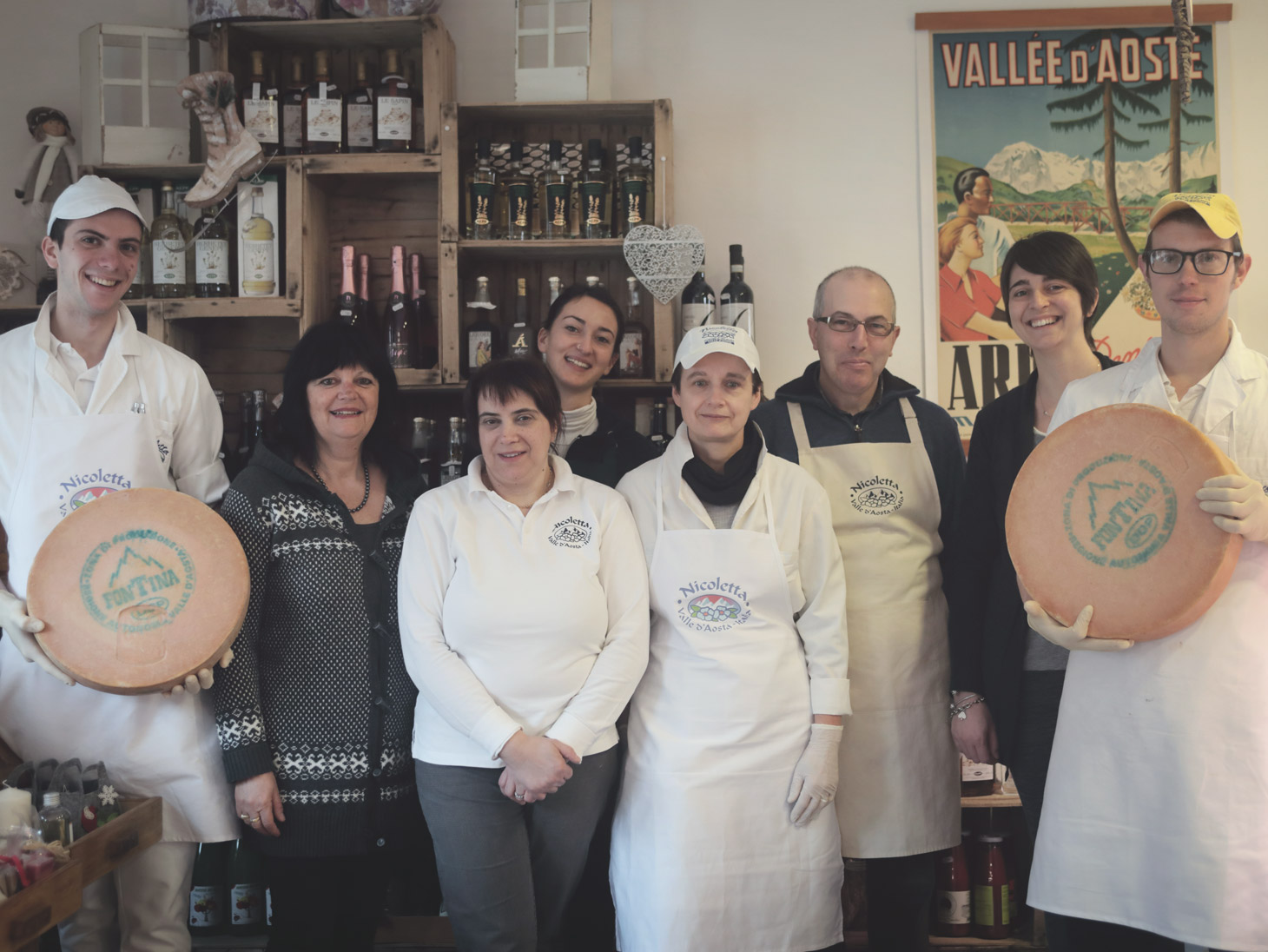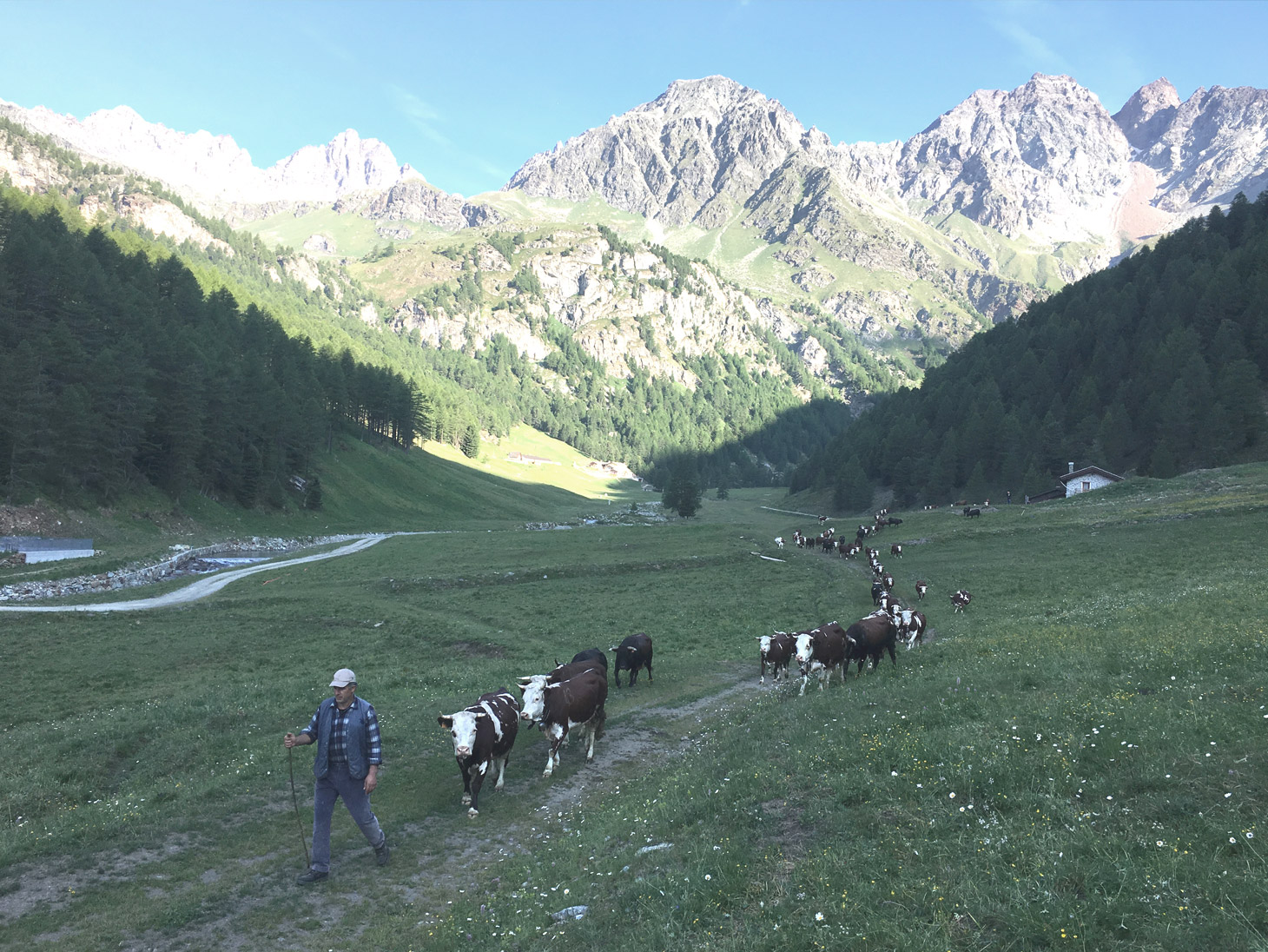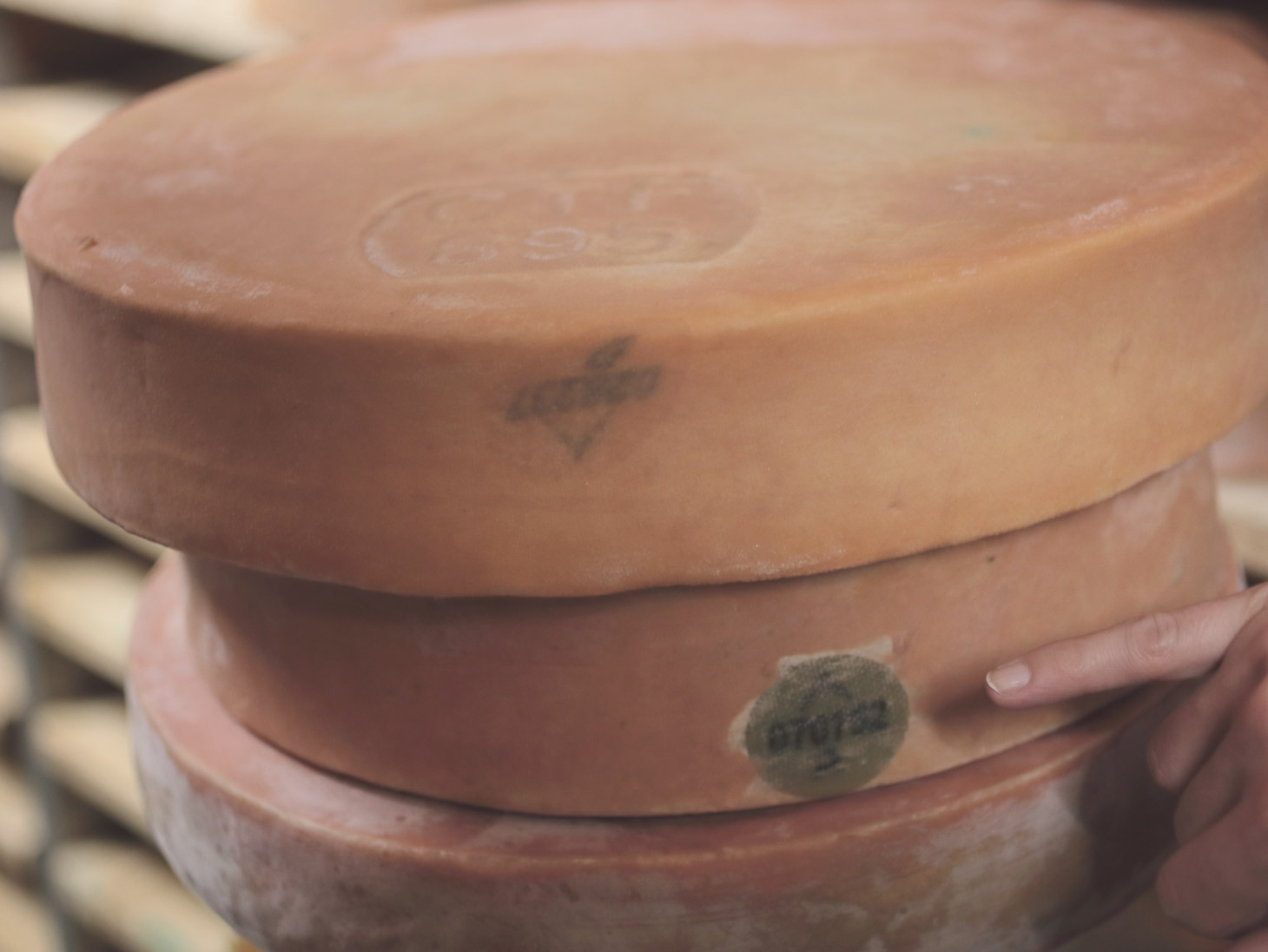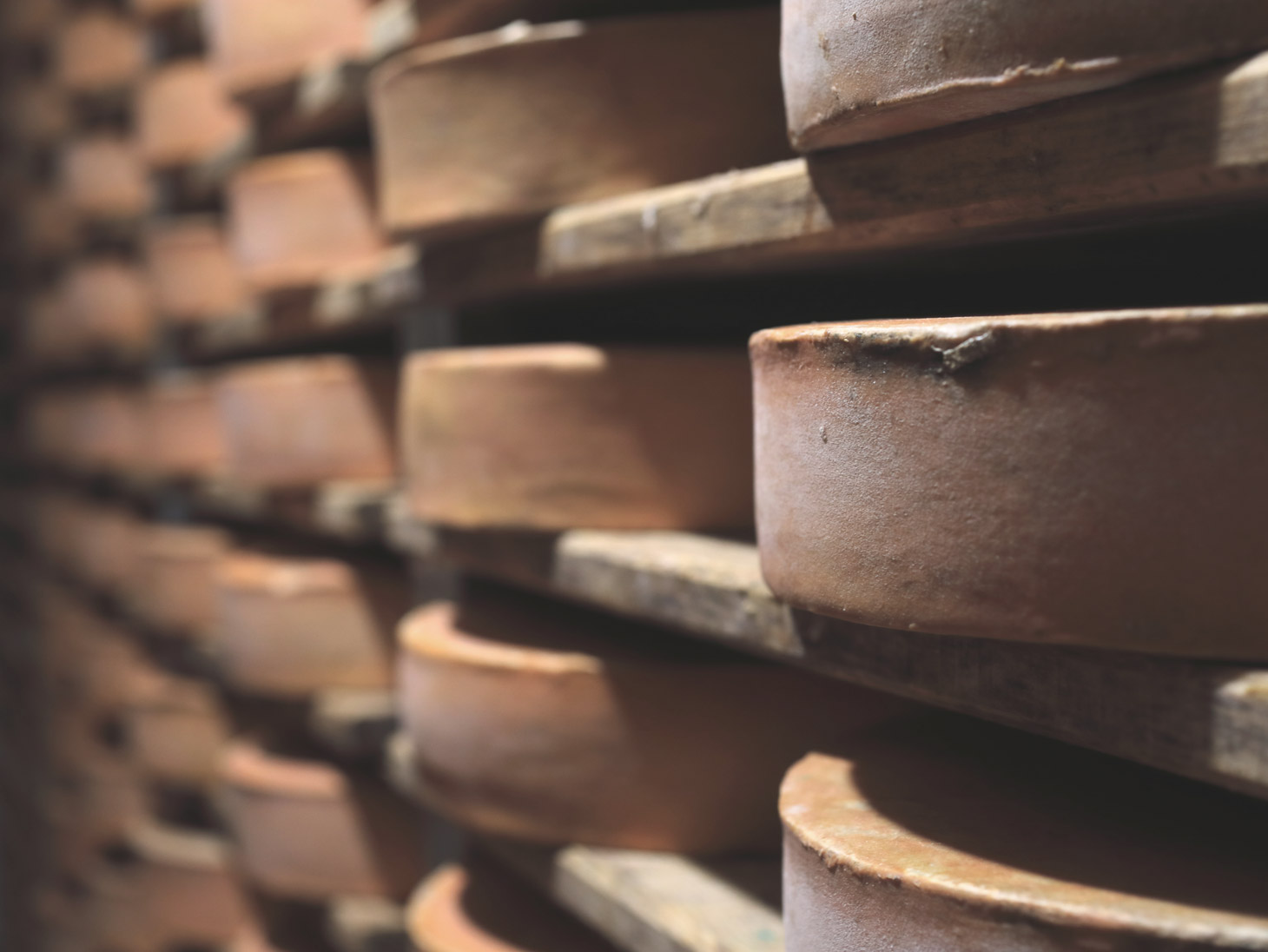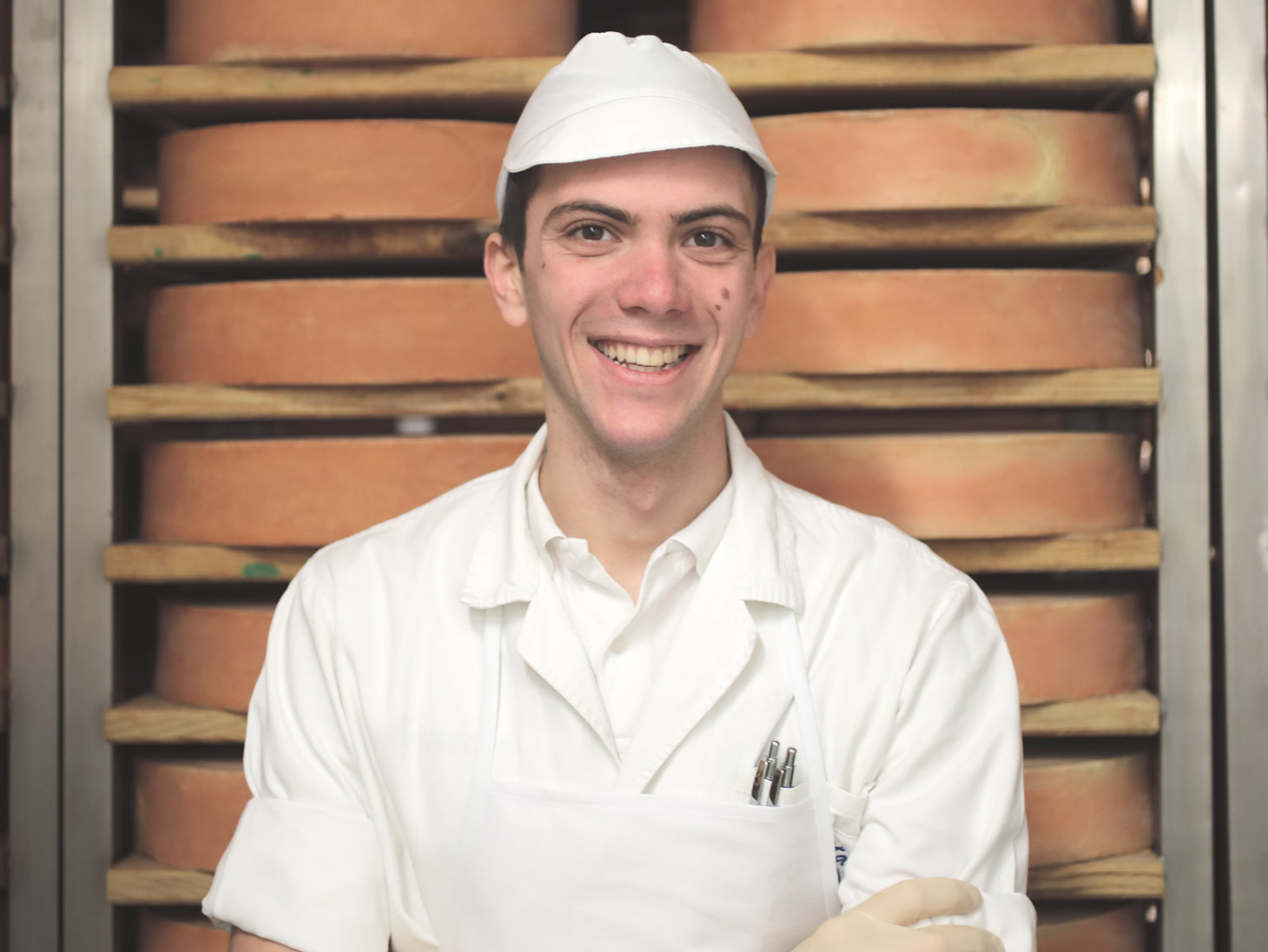
Once summer started we went to Valle d’Aosta to visit our partner and friend Nicoletta. Our goal was to live a first hand experience of the alpage, how everything begins and how Nicoletta selects the wheels to bring to a perfect affinage.
Our travel started from Donnas (AO) where Paolo told us about the close connection that Nicoletta has with small producers. Infact, the job of an affineur begins with the selection of the wheels through tastings, recognising the distinctive features of each pasture, the peculiarity of each dairymen and a deep experience in managing a so variegated raw material.
At a certain moment Giacomo, son of Paolo, decided to join our group: we had been glad to see how this young guy was so passionated, his eyes were shining while he talked about Fontina. He brought us in the aging room, an historic building next to a more recent and modern one where Nicoletta, besides innovation, keeps all the attributes of a traditional aging room, like the wooden boards where Fontina lies.
While walking through shelves, with a centimetre of water under our feet to maintain humidity, Giacomo taught us how to recognize when a Fontina is made in Alpage or or down in the valley: green plaque and dairy number over 500 for the first ones, neutral colour and dairy number under 500 for the second one.
Then we met the “real” Nicoletta: we discovered that the company takes its name from Paolo’s wife! She’s the one who takes care of the company shop, an enchanting place where all the specialities of Valle d’Aosta are sold, needless to say the most important ones are the cheeses.
Impatient to see Fontina alpage production, the following morning we woke up at dawn, destination Vayoux alpage, at 2,000 meters hight. Here, after the first milking at 7 am, cows are taken to the pasture for all the day, and return to the shed only in the afternoon for the second milking. In the meantime the dairyman starts working the morning milk. Fontina is made by raw milk coming from a single milking, so it is produced twice a day: early morning and late afternoon. Once cut, the curd is cooked, extracted, put in the molds and pressed. Salting and the aging follow, with the critical passsage of rind washing: here is where takes the field Nicoletta.
While walking along cows we found out that Valdostana breed despite the tame look, has a dashing character, enough to be the protagonist of an annual challenge where is elected the strongest cow: the Reina.
We went forward with our visit on higher pastures, beyond 2400m above the sea, where the herd is taken only for 20 days in August when pastures are ready. A really breathtaking place, and the feeling that the cheese, over there, has something truly special. Also this is the credit of Nicoletta: they find the best wheels, refine them in the best way depending on the specific characteristics. A work that translates into the safeguard of Fontina’s identity, a cheese that expresses itself at its best when wisely aged.
We came back to Valsana carrying a new experience in our bag and with the strong belief the best way to do research is learning on the field.
The Aging
For the first 40 days the cheese is “taken by hand” four times a week: Monday a dry salting, Tuesday a water washing, rest on Wednesday, Thursday salting on the other face and Friday another washing. For the other 40 days the wheel is washed and turned twice a week waiting to become Fontina, with the approval of the consortium and then the application of the DOP mark.
There’s not an exact procedure. The refiner’s skill is exaclty the ability to feel and perceive at which point of maturation the product is.
“Patience and marked sensitivity are the fundamental qualities of a good cheese affineur” as Giacomo says.
Giulia Bassetto
Marketing Manager

